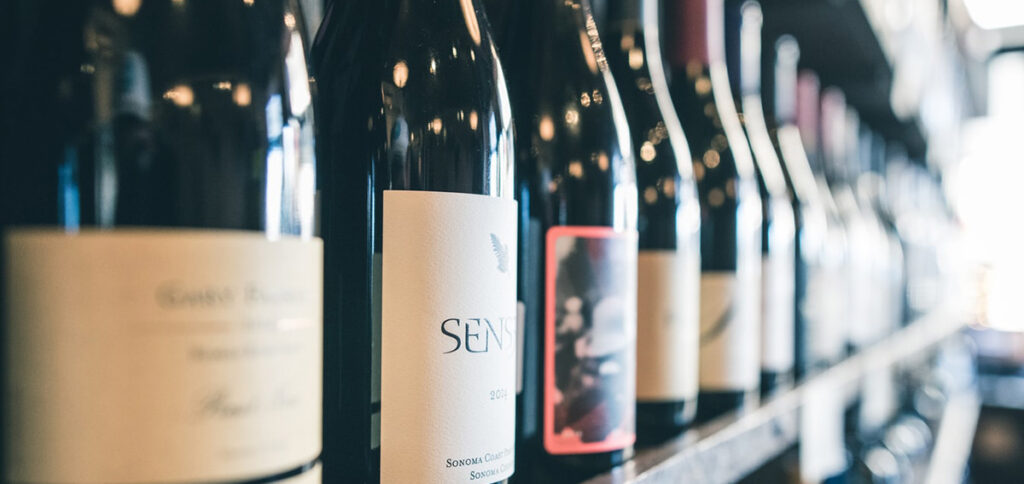Further positive development for the wine market

In the third quarter of 2020, consumers continued to purchase even more German-made wines. The German Wine Institute (Deutsches Weininstitut or DWI) states that German wine sales volume and turnover both grew by approximately eight percent as compared to the same period in 2019.
Meanwhile, foreign wines grew only two percent in sales volume and five percent in turnover. This was determined via the Nielsen Homescan Panel market analysis, which analyzed private household wine purchases on behalf of DWI. Also notable was how more people purchased local wines than in the third quarter of 2019.
The regional wine growth primarily stems from the very strong demand in July, while August and September were much lower. Monika Reule, CEO of DWI, explains that “this development is probably down to the fact that, on the one hand, households had built up a certain stockpile of wine, while on the other hand, the situation in catering relaxed again somewhat from August, meaning wine consumption shifted back to that area again”. However, looking at all wine origins, Germany’s overall wine market grew by five percent in sales revenue and seven percent in turnover in the third quarter of 2020.
2020 vintage: A look inside the 13 German growing regions
The 2020 vintage bore excellent quality all across Germany. This overview examines how the vintage developed in the 13 German growing regions:

Dry weather conditions, turbo-harvests and top quality
A warm and sunny spring meant that the vines showed their first green grapes as early as April. However, right on time for the mid-May Ice Saints, another frost generated strong damage and significant yield losses, particularly in Franconia, Saxony and Saale-Unstrut as well as parts of Württemberg.
By the end of May, the grapevines were already flowering – eight to ten days earlier than the average over the last 30 years. Likewise, the primary grape harvest in many regions started as early as the end of August. The ongoing good weather and summery temperatures caused many varieties to ripen simultaneously, which placed time pressure upon the harvest. Winegrowers often harvested in the early morning or the middle of the night to achieve the freshness expected of German wines. Most will recall 2020 as the year of the “turbo-fall,” which had often already finished by the end of September. On November 30, the vintage was still crowned a successful ice wine harvest in several regions.
Unevenly distributed harvest yields
This harvest yield of approximately 8.6 million hectoliters was slightly higher than the previous year and two percent higher than the ten-year average. However, the quantity was distributed quite unevenly. Franconian winegrowers recorded a historically low harvest, 38 percent below the long-term average, due to late frosts and a long dry period. However, winegrowers in the Hessische Bergstraße region increased their yield by 31 percent. In the two largest German growing regions, Rheinhessen and the Palatinate, slightly above average harvest yields are expected, with a minus of one percent or a plus of six percent. Likewise, Baden and Württemberg estimate a harvest low of ten percent.
Good sales revenue lowers the wine inventory
Regional wine inventories were significantly depleted in the past wine year. A publication by the DWI announced that, as of the cut-off date of July 31, 2020, the stored quantities of German wines and sparkling wines had decreased, as compared to the same period in the previous year, by 0.7 million hectoliters to 8.4 million hectoliters. This is a 7.4 percent decrease.
Good German wine market sales revenue
Following the exceptionally large 2018 vintage harvest yield of over 10 million hectoliters, the German wine inventory had achieved a similarly high level of 9.1 million hectoliters by the cut-off date of the previous year. These declining numbers further indicate the good sales revenue of local wines, as the DWI had previously demonstrated in August via the Nielsen-Haushaltspanel for the first half of 2020. Meanwhile, foreign-origin wine inventories increased by 3.7 to 4 million hectoliters. This led to an overall inventory of 12.4 million hectoliters of wine, distributed evenly between producers and retailers. At the time of the 2019 survey, 54 percent of all wines were still stored with producers.
Measuring the quantity of stored wine by wine varieties, white wines amounted to 59 percent and red wines amounted to 41 percent. Sparkling wine made up approximately a fifth of the inventory, while the share of German sparkling wines, at 0.6 million hectoliters, was five percent.
Would you like to share your experiences and innovations with an international audience? Then take part in the next drinktec which will take place in Munich from September 12 to 16, 2022.
This article is powered by Verlag W. Sachon.
